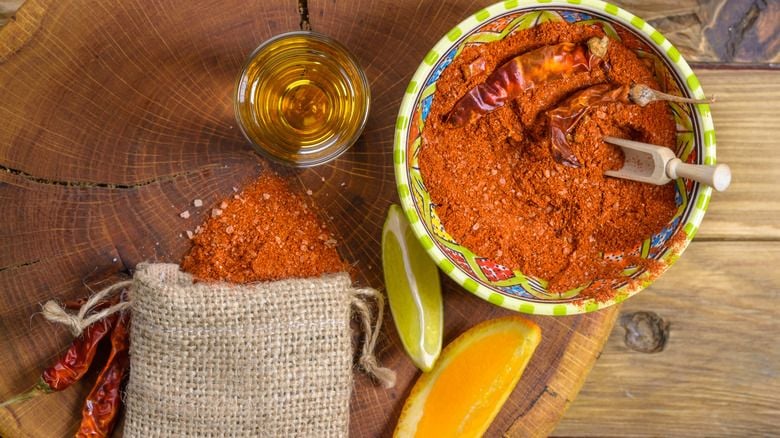
The Unexpected Allure of "Worm Salt" in Mexican Cuisine
- Sep 27, 2025
Sal de gusano- a traditional Mexican ingredient linked with making mezcal, reveals its true essence beneath its literal English translation as "worm salt". The seemingly unattractive name, however, deceptively disguises the important role this ingredient plays in Mexican cuisine and agave cultivation. Far from being actual worms, the "worms" in question are in reality larvae from moths that contribute to the pollination of agave plants.
Dating back to Oaxacan origins, sal de gusano embodies a blended seasoning that is used to add depth to a mezcal pour and as a flair to the rims of tequila, mezcal, and agave-centric cocktails. Ingredients like toasted moth larvae, dried chiles, and salt combine on a metate - a traditional stone tool, delivering a seasoning medley of earthy, spicy, and salty notes.
Beyond its role as garnish, it delivers flavors that accentuate the undertones of agave-based spirits and drinks, serving as a culinary ode to the agricultural and drinking customs in Mexico. According to Edith Moreno Sanchez, a botanist and chef at Restaurant Agave 1621, "Preparation is the most significant factor in melding all the ingredients of sal de gusano harmoniously. It is more than a mechanical act; it embodies an art that necessitates patience, rhythm, and a genuine respect for tradition."
The nuanced, smoky umami profile of a good sal de gusano, according to Max Reis, the beverage director at Mírate and Daisy in Los Angeles, complements an agave spirit's herbaceous characteristics. It can aid in balancing out sweeter components in a cocktail and has more extensive culinary applications. Andres Cruz, the director of Mexican sales and hospitality for Mezcal Vago articulates, "It can deliver a pleasing touch of salinity and spice to any dish, similar to a classic table salt."
Profundity holds its place in sal de gusano as it represents more than a culinary ingredient. Essentially, it's emblematic of the intricate connections between the land, the agave plant, and Oaxacan tradition. The production process of sal de gusano begins at the base of the agave plants, housing the larvae that feed off their roots in a symbiotic relationship.
These days, the "worm salt" available in the U.S. originates from methodically hand-harvested worms, preferably during Oaxaca's rainy season. Despite shifts in the harvesting process, the distinct earthy flavor imparted by the worms maintains its connection to the agave long after harvesting.
As Sanchez emphasizes, "Sal de gusano is an unexpected boon from the agave ecosystem. It exemplifies the magnitude of life and nourishment that can be generated from just one agave plant beyond mezcal."
In the evolving scenario of agave spirits, "worm salt" is steadily overcoming its initial aversions. Reis observes that consumers are increasingly open to tasting it, especially when included as a surprising element in a memorable dining experience.
Furthermore, knowing and appreciating sal de gusano elevates the value of Mexican drinking culture. While it may seem unelevated at its core being sourced from an insect, sal de gusano is capable of crafting exceptionally delightful culinary experiences.






